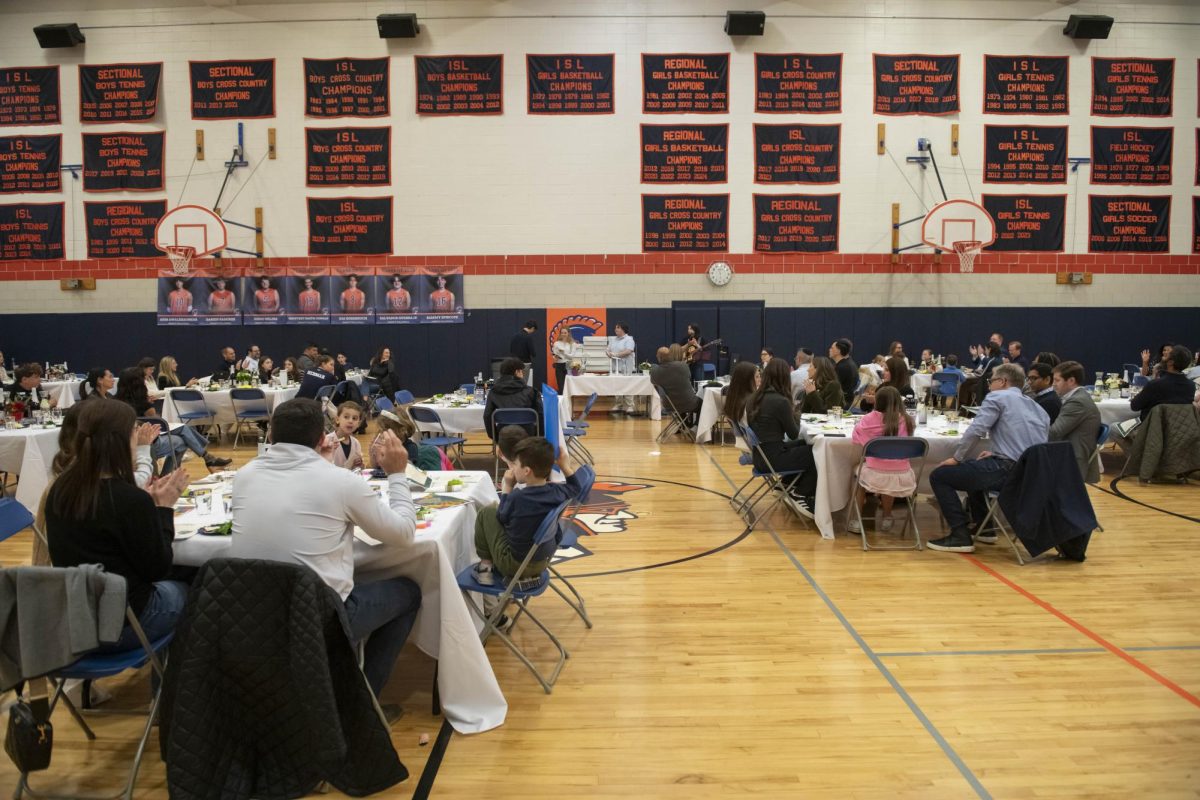Brave Women of Iran Protest to Regain Human Rights
Trigger warnings: This article contains mentions of suicide, murder, and rape.
Iranians protest in solidarity with Mahsa Amini in Ottawa (September 25, 2022).
Mahsa Jina Amini, an Iranian Kurdish woman, was detained by Iran’s “morality police” on September 13 for allegedly failing to adhere to the nation’s Islamic dress code. She died in police custody three days later.
Iranian state television reported that Amini died by a heart attack, releasing CCTV footage of her collapsing in the police station to support their claim. However, Amini’s family fervently denied the police department’s story, saying that she hadn’t had any underlying health issues and accusing the authorities of abusing Amini and fabricating the incident. Although her father was later threatened by the Iranian government to publicly support the state’s version of the event, a CT scan of Amini’s head revealed that she had a bone fracture and a hemorrhage, contradicting police reports and suggesting a more violent cause of death.
Amini’s killing sparked widespread anti-government protests all over Iran. Starting the day after her death, the protests have since spread to over 100 places around the nation. Women, many of whom are fairly young, have bravely stood at the vanguard of the nationwide protests, calling for freedom, dignity, and an end to Iran’s Islamic dress code regulation.
Inspired by Persian mythology, many protestors have publicly unveiled and cut their hair, and some have set fire to their headscarves. Protestors have also frequently chanted “Women, life, freedom,” taking the slogan from the Kurdish Freedom Movement led by the Kurdistan Workers’ Party.
The Iranian government has harshly responded to these protests: Security officers have attacked protestors with tear gas, batons, and—in certain cities—live bullets. At least 483 protestors have been executed, though the true number is likely much higher given the difficulty of confirming events with the regime cutting off mobile internet access.
As many as 15,000 people, including journalists, activists, lawyers, and educators, have been detained since Iranian protests began in mid-September, according to Javaid Rehman, the United Nations (UN) special rapporteur on the Situation of Human Rights in the Islamic Republic of Iran. When he spoke to the UN Security Council in early October, Rehman claimed that at least 277 people had died as a result of the “unabated harsh response of security personnel.”
A total of 277 out of 290 Iranian parliamentary members signed an open letter on November 15 urging for protestors to be given even harsher punishments to serve “as a good lesson in the shortest possible time.” Although lawmakers failed to specify the methods of such punishment, they did note that it would “prove to all that life, property, security and honor of our dear people is a red line for this establishment, and that it would show no leniency to anybody in this regard.” Given that the Iranian authorities have reportedly sentenced some protestors to death as punishment, many are concerned for what the open letter will entail.
Laura Ilkhchi, an Upper School mathematics teacher at Latin who was born and lived in Iran until she was 7, expressed concern over the regime’s increasingly harsh measures. “Here, if you’re arrested, there’s a process that you go through to ensure fair judgment,” she said. “There, you can be arrested for anything: You can be arrested for walking, even. And you might not even have proper representation; since the parliament is very much involved in sentencing, authorities can just give you a sentence without even having you step foot in a court.”
“The bail system isn’t much of a bail system,” she continued. “You have to own a non-mortgaged house and hand over the title of your house as bail, it’s not like a few thousand dollars.”
If arrestees are unable to acquire bail, they often suffer severe and unethical torture within prison, with Iran’s security forces having been reported to use rape as a means of punishing protestors. During early November, Yalda Aghafazli, a 19-year-old protestor, killed herself 48 hours after her release due to the torture she endured in prison. Yalda was not an isolated incident: Many other released protestors such as Arshia Emamgholizadeh have resorted to suicide after facing unimaginable horrors within prison.
“Seeing how it’s so normal to us, we take so much of our freedom for granted, assuming that the situation is the same worldwide,” Ms. Ilkhchi added. Currently, Iranian women face significant discrimination: They are not permitted to sing, dance, ride bicycles, and they must wear head coverings regardless of their religious affiliation, begining at age nine. “When my cousins, who were older than nine, and I were visiting Iran, we all knew that if anyone stopped us, my cousins were not nine. Everyone would try to lie about their age as much as they could until they were pushing the limit and could face arrest,” Ms. Ilkhchi said.
Iranian women are further prohibited from filing for divorce under most circumstances, despite their husbands having the power to exercise various privileges over them: Iranian women cannot leave the country, acquire a passport, go hiking, or even sit for a dental assistant’s exam without their husband’s permission.
“This is a battle that the Iranians are fighting and all they have asked is for support in spreading the word,” Ms. Ilkhchi said. “I want people to continue to raise awareness, read up on [the ongoing situation], and, if they feel comfortable, post about it—that alone makes a great difference.”
In the past, news agencies around the world have been biased in their coverage of Iranian protests. A study by researchers Oluseyi Adgebola, Sherice Gearhart, and Janice Cho titled Reporting Bias in Coverage of Iran Protests by Global News Agencies noted that the reporting of the 2017-18 Iranian protests sustained a generally negative pattern. Reporters depicted protests as spectacles by focusing on their disruptive elements and characterizing protestors as “deviants,” without properly articulating their agenda. Such a trend in coverage may illustrate mainstream media’s propensity to uphold existing frameworks, showing little tolerance for dissent.
In the present, Iran is attempting to control the narrative around the ongoing protests. Along with limiting citizens’ social media access, the country has imposed a strict ban on the exportation of independent information to news outlets abroad.
At the 2022 FIFA World Cup, the Iranian football team has had to navigate an increasingly difficult political situation. Last week, the Iranian players refrained from singing their national anthem to stand in solidarity with Iranian protesters. Before their second game last Friday, however, the players mouthed the words to the national anthem while donning tearful and grimaced expressions.
Though the government was reported to have compelled the team to end their protest by threatening their loved ones with imprisonment and torture, the players have publicly denied such claims. Given that Iran lost to the U.S. yesterday, many are concerned for the team’s fate as they head back home.
“I think it’s just really important to talk about the issue that hijab women are facing, especially in Iran, but also in places like France where women are being banned from wearing the hijab.” Nisa Ahmed, a junior and the head of Latin’s Islamic Student Association, said.
“There are similar problems in opposite parts of the world and I think that attention should be brought to all parts of it,” Nisa continued. “It’s really important for people to recognize the injustice that women are facing all over the world, while keeping in mind that wearing a hijab is a very personal choice,” she said. “It’s a very personal part of a woman’s identity.”
Iran is one of 45 elected members of the UN Women’s Commission. Considering the commission’s intent to promote womens’ rights and welfare, many find Iran’s membership insincere.
“The United States believes that no nation that systematically abuses the rights of women and girls should play a role in any international or United Nations body charged with protecting these very same rights,” U.S. Vice President Kamala Harris said in a November 2 statement released by the White House. “Iran has demonstrated through its denial of women’s rights and brutal crackdown on its own people that it is unfit to serve on this Commission,” Harris continued.
Many other prominent women have called upon the United Nations to take action. A group including Former U.S. Secretary of State Hillary Clinton, former First Lady Michelle Obama, Canadian Deputy Prime Minister Chrystia Freeland, talk show host Oprah Winfrey, and Nobel laureates Malala Yousafzai & Nadia Murad demonstrated their support for Iranian women in an open letter published in The New York Times. The group further started a petition on the website Woman, Life, Freedom, asking the UN to remove the Islamic Republic from the commission.
The United Nations itself has responded to the situation by releasing a statement extending support and condolences to Amini’s family and urging Iran to hold an impartial investigation into her death, but have yet to speak on the possibility of Iran being removed from the women’s commission. The UN did however, pass a vote on November 22 to hold a special session on Iran’s deteriorating human rights situation.
Many have been frustrated with the UN’s lack of tangible action. Ms. Ilkhchi said, “The United Nations has failed its cause; for a country like Iran to have made it onto, and at the moment, continue to hold membership within the UN Women’s Commission is a complete failure on the UN’s part. The current regime has been oppressive since it rose to power in the ‘70s; nothing in Iran has changed within the last month and a half, we’ve only highlighted it.”
“I would like to recognize, however, that not that long ago, Iran used to be very progressive in its model of its society.” Ms. Ilkhchi said. “My mom was not raised under the current regime. I’d like people to recognize what Iran used to be in the ‘50s and the ’60s even. The regime that [Iranians] are currently living under is fairly recent, and I was not raised by a woman who accepted that kind of oppression.” Before the Iranian Revolution in 1979, Iranian women had been acquiring rights similar to that of women in other countries, and they had access to pursue nearly any career they chose.
“The most crucial element of the ongoing protests in Iran is that a large group of people still remember life before 1979, prior to the Iranian Revolution, where there was a lot of social freedom for women,” Madison Vanderbilt, a senior and co-head of Latin’s Intersectional Feminist Alliance, echoed. She added, “These women aren’t fighting for rights that they never had; they’re fighting for rights that they lost.”

Sofia Grimm ('25) is excited to serve as Opinions Editor this year! Her fourth year writing for The Forum, Sofia has been in various roles at The Forum...






















































Betty Lark Ross • Dec 10, 2022 at 4:19 pm
Thank you for this insightful reporting. By sharing this we gain greater awareness of how important it is to defend democracy and our freedoms. Awareness can grow to commitment and to action towards supporting women locally and globally in the fight for equality.
Jack Bennett • Dec 2, 2022 at 10:41 pm
Genuine hope, courage and commitment comes in many forms. The greatest examples are manifested when suffering, tribulation and suffocating control are forced upon innocent women, children and others. The struggle for freedom is a noble and never-ending belief worldwide. This article points out the faith, wisdom and fearlessness the women of Iran display on a daily basis.
Nick Bennett • Dec 2, 2022 at 9:56 pm
Such a great article. Gives so much insight to the struggles and strength of the women in Iran. Well done to all involved.